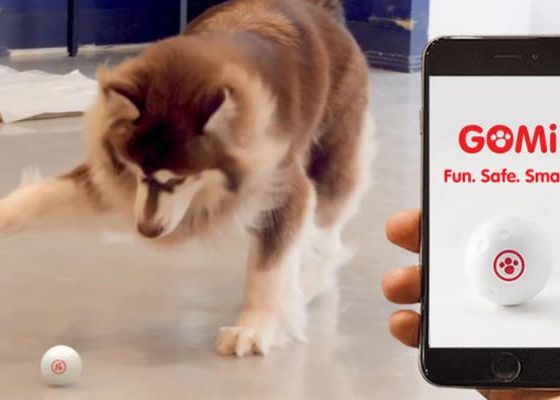The measure of any good technology is how much it improves your quality of life. But how exactly it does this depends on the nature of the technology. For example, much of our technology is dedicated to entertainment. Whenever there’s a new game console or smartphone release, everyone gets excited. And it’s easy to understand why. Who doesn’t want to play the latest AAA games, or rock the hottest smartphone on the market? But other technologies benefit us in other ways. Perhaps the most overlooked of these technologies are the ones that save us time. Robotic vacuums are an excellent example.
Prior to the invention of the vacuum cleaner, cleaning your rugs was a big deal. Absent any kind of suction, your only option was to hang them up outside and beat them with sticks. This was effective, but it could take all day to clean just a couple of rugs. As for wall-to-wall carpeting, it was unthinkable prior to the vacuum cleaner. Robotic vacuums have marked yet the next stage in vacuum cleaner evolution. Early vacuums took a day-long task and made it an hour-long task. A robot vacuum, on the other hand, reduces your time investment to almost zero. All you have to do is empty the dust hopper every now and then.
Here, we’re going to review the PREMBOT P3. This is a moderately-priced robot vac with a surprisingly powerful motor. It’s easy to use, it has a built-in mop, and it can handle most floor plans with ease. But there are many more features to think about when you’re looking for a good robot vacuum. We need to talk about the physical design, and where it’s capable of going. We need to discuss the battery life, and how long it takes to charge. We need to look at the vacuum capacity, as well as the mopping performance. And of course, we’ll have to dig into the smartphone app, and learn what it’s capable of. After we’ve done all that, we’ll have a clear picture of how this vacuum works. Let’s take a deep dive, and see what we discover!
Overall Design
The PREMBOT P3, like most robot vacuums, has a flat, disc-shaped design. It’s constructed from a black plastic, most of which has an easy-to-clean glossy finish. The exception are some matte bumpers around the perimeter, which serve two functions. For one thing, they provide a small measure of bump protection. For another thing, they create an attractive highlight on an otherwise utilitarian design. One thing we appreciated is that the overall thickness is only 2.95 inches. That’s slim enough to fit under most furniture, so the vacuum can go pretty much anywhere.
At the back of the housing, the dust bin and water tank are visible, so you can see their current status. On the front, there’s a bar-shaped sensor that wraps around the leading edge. This infrared sensor is aided by a fisheye camera sensor on the top of the housing. Behind the camera, there are a pair of soft touch grey buttons. The front “play/pause” button can be used to start or pause a cleaning cycle. The home button behind it will send the vacuum back to its base. Behind that, there’s a little white LED indicator, which illuminates when you’re connected to your WiFi network.
The bottom of the housing is where the action is at. There, directly in the center, is the main roller brush. We really liked the design here, since the brush is mounted on a floating axle. It’s spring-loaded, so there’s constant downward pressure. But at the same time, the brush can float up and down as needed for different carpet depths. Like many robot vacuums, there are a pair of additional horizontal brushes to the front sides. These don’t serve any practical purpose on a carpet. However, they’re highly effective on hard floors, for sweeping more debris towards the main brush.
The main drive wheels are big, beefy, and rubbery. They’re large enough to cross up to an 0.82-inch transition. That’s enough for almost any ordinary floor transition, and it’s pretty impressive for such a slim vacuum. To the front of the drive wheels, at the front center of the unit, there’s a smaller wheel in its own sub-housing. This sub-housing is motorized, and allows the wheel to pivot as needed, so it can steer the vacuum.
Behind the main wheels, occupying the rear third of the vacuum, there’s a mounting pad. This allows you to attach a mopping pad when you want to engage the mop function. This pad is blue and textured, and designed for gentle scrubbing. It’s reasonably effective, but we wish there were two of them in the package. As it stands, the single pad is liable to wear out in far too little time.
Along with the P3 itself, there are a couple of other important components to the kit. To begin with, there’s the charging station. This is a tall, thin plastic stand that sits up against your wall. It has a little platform jutting off from it, with charging contacts for the vacuum. Think about where you’re placing the station before you begin. It’s where your vacuum is going to spend most of its time. The other important part is the handheld remote. It’s about the size of a TV remote, and it’s straightforward to use.
Vacuum Performance
The PREMBOT P3 has a set of built-in sensors to detect what kind of surface it’s on. Depending on how much suction is required, it can adjust between three different suction levels. The highest level is 4,000 Pascals (Pa), about half again as powerful as your typical robot vacuum. That said, even on the highest suction level, the motor isn’t terribly loud. That’s because of its brushless design, which has fewer moving, touching parts than a traditional motor.
Along the same lines, the sensors can automatically activate or deactivate the mopping function. When you’re on a solid surface, the mopping pad will scrub away at the floor. When you’re on a carpet, the water will shut off. That way, your carpet doesn’t get soaked.
If you like the mopping function, but you’re worried about a tangled vacuum, check out the Lefant F1. It’s also a mop and vacuum, but there’s no roller brush, just a wide suction hole. This is great for preventing hair from getting tangled. On the other hand, it’s not very effective on carpets.
The P3 has a rated working time of 110 minutes. In reality, this is a rough estimate. Depending on what you’re cleaning, you can get more or less, because the motor power will vary. That said, if you’re cleaning a mix of surfaces, 110 minutes is a good rough estimate. That’s enough for about 1,250 square feet. For many homes, that’s all you’ll ever need. But if you need more coverage, the vacuum will return to base. The 2,600mAh battery will charge in about two hours, after which the P3 will complete your cleaning cycle.
This vacuum actually ships with two different dust bins. The first is a large, 580ml dry bin. It can’t be used when you’re running the mop. But if you want to run a vacuum-only cycle, you’ll be able to work for longer without emptying it out. When you’re mopping, you’ll need to swap in the 2-in-1 bin. This is a split bin, with a 240ml water tank and a 280ml mixed collection hopper.
Inside the vacuum, there’s an accordion-style hopper, designed to remove particles as small as 0.3 microns. This makes it equivalent to a true HEPA filter, so you’re getting excellent performance. Better yet, it’s washable, so you can reuse the same filter again and again.
If you want an even lower-maintenance robot vacuum, consider the Dreametech W10. It’s a smart robot vacuum and mop with a self-cleaning function. It’s exceptionally powerful, with two rotating mopping pads. That said, it’s expensive, especially compared to the P3.
Setup and Everyday Use
Setting up the PREMBOT P3 is simple and straightforward. First, you set up the charging station, and plug it into your wall outlet. Next, you set the vacuum down, and let it charge. Once that’s done, you’re free to run a cleaning cycle. The vacuum will use a couple of different methods to map your house. First, the camera on top will look for objects. Second, the infrared sensor will not only look for objects, but scan for drop-offs, as well. This allows the vacuum to work efficiently and safety, by day or night.
That said, you can access additional functions via the app. The app is free to download and install, and is available for Android and iOS. Once it’s installed, you can pair with the vacuum via Bluetooth, then configure the WiFi connection. After that, you’ll be able to access the vacuum from anywhere with an internet connection. Within the app, you can create regularly scheduled cleanings, or initiate them as needed. Then again, there aren’t any mapping features. You can’t set no-go zones, or clean individual rooms. On the other hand, the P3 works with Alexa and Google Voice. It also supports over-the-air updates, so there may be additional features in the future.
If you need advanced mapping features, the Trifo Lucy robot vacuum is an excellent choice. Not only do you have multiple mapping functions, but it doubles as a security camera. On the downside, it can sometimes get stuck on floor-to-carpet transitions.
Final Verdict
The PREMBOT P3 is a reasonably powerful robot vacuum that comes at a reasonable price. It’s not perfect. The app in particular was underwhelming, and lacked the smart features we’ve come to expect. On the other hand, the surface sensor and floating roller brush are great features in their own right. The mop pad is nice and scrubby, and the filter does a great job of capturing allergens. If you want an effective, affordable robot vac, look no further.








